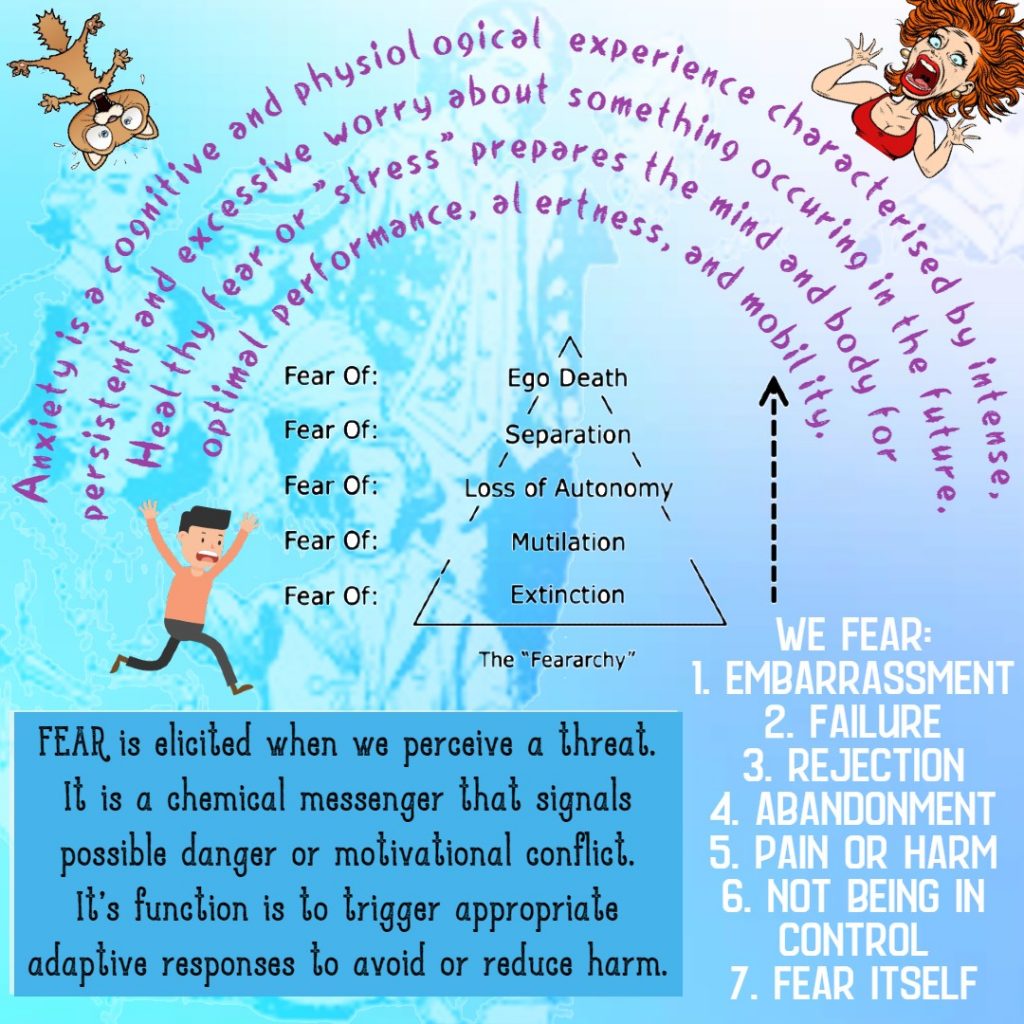Did you know that through a series of controversial (and incredibly sad) experiments, psychologist Harry Harlow, was able to demonstrate the importance of early attachments, affection, and emotional bonds on the course of healthy development. Harlow discovered that love and affections may be primary needs that are just as strong as or even stronger than those of hunger or thirst.
1 Think positive
This sounds easier said than done. I challenge you to intentionally consider alternatives to your habitual, default thinking pattern. We all want to be liked by others – because we want to belong to a group and to feel valued, needed and wanted. Worrying about social situations is very natural because we want to be perceived by others in a certain way. Other people’s perceptions are out of our control. So, we worry about it. We worry about things that are out of our control. We also know that we control our own behaviour, therefore, we feel responsible for behaving in ways that will mesh with others. We believe the likelihood of being liked will increase if we behave in certain ways.
Worrying can become problematic if we overthink past and future interactions, and perhaps we choose to avoid some or all interactions to protect ourselves. But then we don’t get the social connection we need.
I challenge you to think positive. Choose that instead. It will take energy because it might not be your default thinking pattern. Set your positive intention. Use mental energy. Trust that the opposite of your thinking can be true as well.
2 Forget comparison – unless you are a clone of someone else, you don’t have their genes, their life experience, their upbringing, their family history etc. It’s kind of illogical to compare yourself to someone else if you think about it, hey.
Don’t be concerned if others appear to have more or better friends than you. Quality and enjoyment matter more than quantity. Savour the moments of connection, wherever you can find them.
3 Anticipate change
Our life circumstances can leave us vulnerable to a sense of isolation. Relationships shift over time, and we may lose touch with friends who were once important. People form new relationships, move away, start families, become busier at work or start studying etc. Accepting change as normal can help you adjust to a change in your relationships. Just as we grow, evolve, and change, so will our relationships. Couples who were once in love will fall out of love. And friendships that were once enjoyed may become less enjoyable overtime.
4 Tolerate discomfort
Anxiety may cause you to avoid socialising. Understand that feeling awkward or embarrassed in social situations does not mean you are doing anything “wrong”. I remember a period I went through growing up. I noticed people around me starting to use for sophisticated language. I thought I had nothing of value to say, or nothing of interest. I would struggle to form sentences in my head. I was becoming so anxious that my social cognition was compromised. Learning to be comfortable with myself, relaxing into conversations, and listening more deeply to the other person helped me. I remember going on dates thinking I have absolutely nothing to say to this person. That cognition, that thought, wasn’t true. It was part of a larger story that I was creating in my mind.
Reach out to others and your skills will improve with time.
5 Listen well
Practice listening. Ask questions and really listen to the answers, rather than just waiting for your turn to talk, or worrying about how you will respond. If you’re curious about what someone is saying, your mind will naturally form a question or recall a similar experience that you can share.
Respond warmly to people’s experiences through your posture, facial expressions and words. Put the mobile phone away and be present.
6 Rehearse
Out of practice with small talk? Spend some time thinking about questions you can use when conversation stalls. You might ask if the other person has been overseas or travelled, what music do they like, or what movies they like to see at the cinema. A natural question to ask is what did you get up to today? What do you have planned for the weekend?
I once attended a training for work. The facilitator shared her experience of often finding herself in similar situations, and she decided to formulate a “go-to” script for when she became tense, and a conversation stalled. Rather than panic, she had a mental go-to script to bridge the gap until the conversation returned to a natural flow. Sometimes it’s nice to allow for a silence, scan your environment and discuss something happening around you.
7 Go offline
Social media helps many people, but it can also increase disconnection, depression, loneliness, anxiety, and headaches. Ensure you have a healthy offline life. Perhaps invite trusted online friends to an offline meeting to build your relationship.
8 Help and service
Helping someone gives a feel-good rush. Oxytocin and dopamine neurotransmitters have been shown to be involved in human bonding. These chemicals can make us feel pleasure. Create a bond with someone by offering help or asking for it. If we’re not someone who asks for help often, the people who know us well will likely feel closer to you because you need them for something, nourishing the bond you have. Have you noticed that strangers in the street are often very willing to help someone with directions? It makes people feel good to help others and be helped in return. Something as little as assistance with a bag or holding a lift can help people feel seen and cared for.
9 Get involved
I know this one may make some people go “Eeeeek” and cringe. However, evolutionary and developmental psychology … and all psychology, has suggested time and time again, that feeling part of a larger community and getting involved makes us feel alive and part-of. Joining in connects you to other people, unites you in a shared activity, and provides an easy way to get to know people better.
Have you ever watched a group of people in the street having a laugh, or watched people playing a sports game, or doing an activity together – while you’re sitting alone on the outside. You might mock them to yourself to make yourself feel superior or protected. We’d rather be part of. It’s just the truth.
10 Manage stress
Everybody has some social situations they dread. Practice simple stress management techniques, such as breathing deeply and slowly, to help keep your stress in check through awkward moments.
We need stress to perform optimally. Befriend your stress. When it becomes overwhelming, recognise that it’s happening, allow it to be there, investigate where it’s living in your body, and nurture that part of yourself. Talk to a trusted friend in times of excessive or toxic stress. Do whatever you need to come back home to yourself. Rest. Drink water. Eat nutritious food. Shower or bathe. Spend time outdoors in nature. Watch something on tv. Listen to music. Come home to your true self, recharge the batteries, and then jump back in. You’re allowed to switch off for a while.
11. Practice, practice, practice
Relationship skills can be learnt. Don’t be discouraged. Remember that social connections are good for you. If you feel like you need support to build better connections skills, a counsellor or therapist can help.
We learn from new experiences. They create, wire, and strengthen, neural pathways in the brain. You can be silent and listen during social interactions. Get curious about the other person. Ask questions. Share some of your story and ideas. And breath. Practice makes progress – not perfection.


